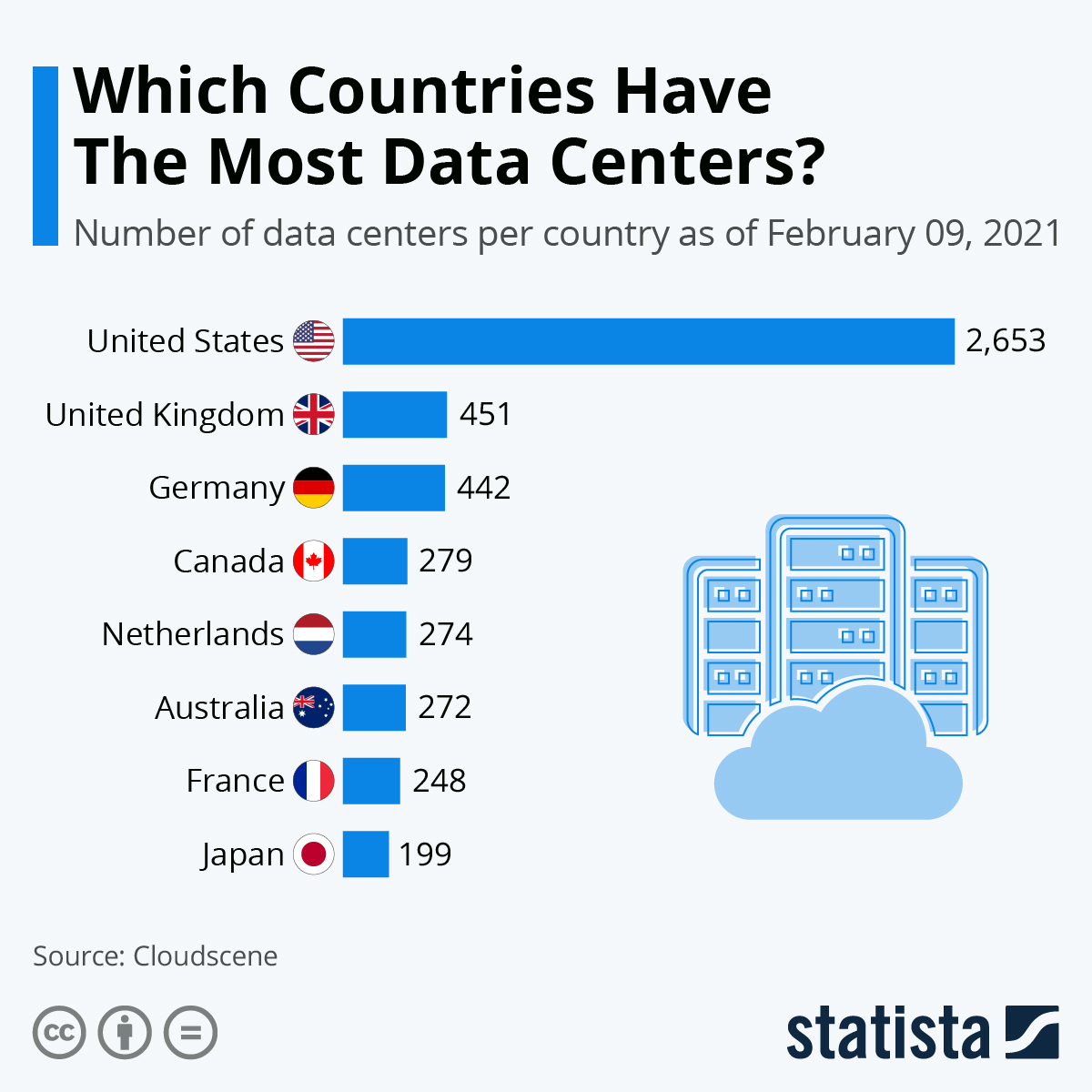this post was submitted on 20 Sep 2024
207 points (87.4% liked)
Technology
60303 readers
5658 users here now
This is a most excellent place for technology news and articles.
Our Rules
- Follow the lemmy.world rules.
- Only tech related content.
- Be excellent to each another!
- Mod approved content bots can post up to 10 articles per day.
- Threads asking for personal tech support may be deleted.
- Politics threads may be removed.
- No memes allowed as posts, OK to post as comments.
- Only approved bots from the list below, to ask if your bot can be added please contact us.
- Check for duplicates before posting, duplicates may be removed
Approved Bots
founded 2 years ago
MODERATORS
you are viewing a single comment's thread
view the rest of the comments
view the rest of the comments

Personally I think it'd be interesting to see this per capita, so here's my back of a napkin math for data centers per 1 million pop (c. 2022):
Worth noting of course that this only lists the quantity of discrete data centers and says nothing about the capacity of those data centers. I think it'd be really interesting to break down total compute power and total storage by country and by population.
I'd also be interested to know what qualifies as a "data center"? For example, are ASIC based crypto mining operations counted, even though their machinery cannot be repurposed to any other function? That would certainly account for a chunk of the the US (almost all of it in Texas).
Yeah, that's the proper way to think about it. And honestly, it should be servers or racks per capita (i.e. some standard unit), not just "datacenters," since those can be of varying size.
I would really want a measure of actual compute power, like teraflops per capita or something. Still imperfect, but better than just counting the number of buildings.
Yeah, almost any metric is more useful than this one, and I'm an American who "benefits" from this stat.
I think it is was supposed to come across as anti American not beneficial. People have been knocking data centers for their overuse of energy, thereby trying to say the U.S. is using mass amounts of energy. They just wanted to make a chart that showed the U.S. having way more of these "problem facilities" without any more thorough information.
I read it as the opposite. There's a certain amount of processing and storage the world needs, and if the majority of that is happening in the US, that's better for the US due to more jobs and more oversight by law enforcement (FBI, NSA, etc). It's also indicative that the tech industry is stronger in the US than elsewhere, which can be good for investors.
That said, it's a completely worthless if it's just an indicator of population density among developed nations. It should be something based on per-capita use of/access to datacenters.
A graph of power used for data centres per capita would be interesting, and I'd think Iceland would be pretty high up that one.
https://www.top500.org/statistics/sublist/
OK, interesting. I'm a little unclear on how they're calculating rMax and rPeak though?
🤷
The first thing i found while looking for processing power / population. Then i got too lazy to calculate.
I'm gonna speculate, but I don't think these systems can run all cpu cores on turbo due to power and thermal limitations and because that wouldn't be good cost/processing power wise (since you need excessive cooling to do that). Rather, they fire turbo on groups of CPUs, allowing the CPUs to cool down till the sequence wraps around
So, I think rPeak is the processing power achieved when the computer is turboing a large chunk of CPUs
Sorry for my messy writing, I'm a little tired